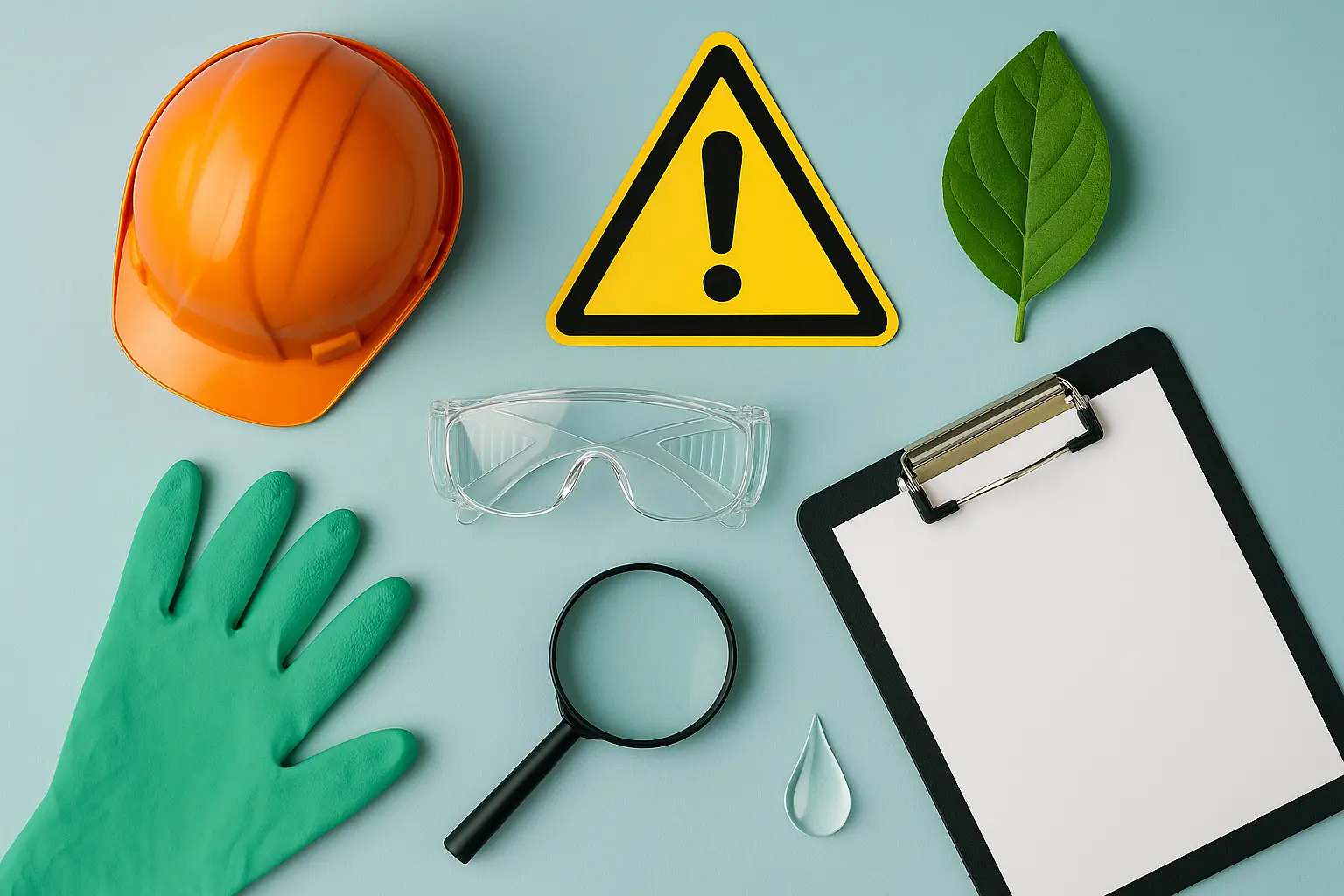ILO Hazard Prevention Certification
The International Labour Organization (ILO) Hazard Prevention Certification is a critical component of global occupational health and safety standards. This certification ensures that workplaces are designed, operated, and maintained in such a manner as to prevent hazards from causing injury or illness among workers. Compliance with this standard not only enhances the well-being of employees but also contributes significantly to operational efficiency by minimizing accidents and reducing healthcare costs.
The ILO Hazard Prevention Certification is based on international standards that are widely accepted across different sectors, including manufacturing, construction, mining, and services. These standards aim to provide a framework for identifying and controlling workplace hazards, thereby creating safer environments. The process involves several key steps: hazard identification, risk assessment, control measures implementation, monitoring and review.
One of the primary objectives of this certification is to protect workers from various types of hazards such as physical (noise, temperature), chemical (poisons, solvents), biological (viruses, bacteria), ergonomic (repetitive strain injuries), and psychosocial (job stress). By adhering to these standards, organizations can ensure that their safety protocols are robust enough to handle a wide range of potential risks.
The ILO Hazard Prevention Certification is achieved through rigorous audits conducted by qualified assessors. During the audit process, assessors will examine all aspects of workplace safety practices, including emergency procedures, personal protective equipment (PPE), and training programs. They also evaluate the effectiveness of existing controls in place to mitigate identified risks.
Another essential aspect of this certification is its emphasis on continuous improvement. Organizations must regularly review their safety measures and make necessary adjustments based on changing conditions or new information. This commitment to ongoing enhancement demonstrates a strong dedication to worker safety and underscores the organization's responsibility towards promoting a healthy work environment.
In conclusion, obtaining ILO Hazard Prevention Certification signifies more than just meeting regulatory requirements; it represents an ongoing effort toward creating safer workplaces globally. As we continue to face evolving challenges in occupational health and safety, maintaining this certification remains crucial for ensuring both worker protection and business sustainability.
Quality and Reliability Assurance
The quality assurance process for ILO Hazard Prevention Certification involves meticulous documentation, regular inspections, and audits conducted by independent third parties. These steps ensure that all safety protocols are consistently followed over time, thereby maintaining high standards of reliability.
- Detailed Documentation: Comprehensive records must be kept throughout the entire certification journey. This includes initial assessments, corrective actions taken during follow-up visits, and final audit reports.
- Regular Inspections: Independent assessors visit sites periodically to check compliance with established criteria. They provide feedback on areas requiring improvement while celebrating successes achieved thus far.
A robust quality assurance framework ensures that any discrepancies found are addressed promptly. This proactive approach helps maintain consistency across different locations and departments within an organization, ensuring that everyone adheres uniformly to best practices.
Environmental and Sustainability Contributions
The pursuit of ILO Hazard Prevention Certification aligns closely with broader sustainability goals by promoting a circular economy model where resources are used efficiently without causing harm to the environment. Herein lies one of its most significant contributions beyond mere occupational safety.
- Eco-friendly Practices: Implementing safer working conditions often leads to reduced waste generation and energy consumption, contributing positively towards environmental conservation efforts.
- Biodiversity Preservation: Safer workspaces contribute indirectly to biodiversity preservation by eliminating harmful substances that could otherwise contaminate soil or water sources.
Furthermore, organizations seeking ILO Hazard Prevention Certification are encouraged to adopt sustainable practices throughout their supply chains. This includes sourcing materials responsibly and minimizing waste during manufacturing processes. Such initiatives not only enhance the overall sustainability profile of a company but also set an example for others in similar industries.
Why It Matters
The importance of ILO Hazard Prevention Certification cannot be overstated, especially given the increasing awareness around workplace safety and health. Compliance with these standards helps organizations protect their most valuable asset—human lives—at every stage of production processes.
- Worker Protection: By adhering to strict guidelines set forth by international bodies like the ILO, companies can significantly reduce the risk of accidents and illnesses among employees.
- Liability Reduction: Organizations that fail to comply with safety regulations may face legal action or financial penalties. Obtaining certification demonstrates proactive measures taken to avoid such liabilities.
- Economic Benefits: Investing in worker safety leads to reduced absenteeism, lower medical expenses, and higher productivity levels within the company.
In addition to these tangible benefits, there are intangible advantages associated with achieving ILO Hazard Prevention Certification. These include enhanced reputation among stakeholders, improved employee morale, and better relationships between employers and employees. Such positive interactions foster a culture of mutual respect and cooperation which further strengthens organizational resilience against unforeseen challenges.





